When to dig up potatoes for storage: we harvest the crop on time and correctly
For the overwhelming majority of summer residents and gardeners, potatoes are a vegetable that is doubly loved. How could it be otherwise! After all, the so-called "second bread" is easy to care for, and has no claims to taste. As you know, food with it is not only healthy, but also satisfying. However, it is not enough to grow enviable tubers in order to harvest the crop correctly and on time, you will also have to sweat.
We will talk about when and how to dig potatoes in order to later put them in storage in our article.
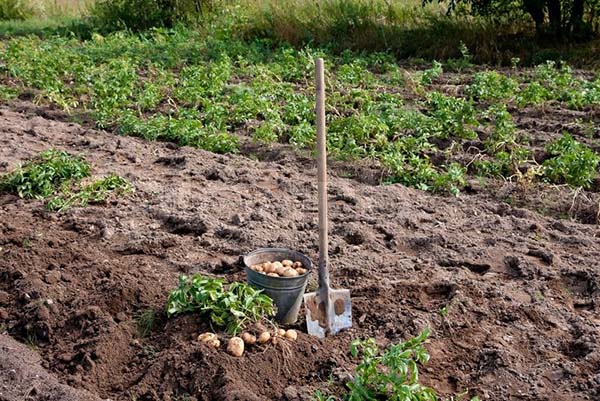
Content
When to harvest potatoes for storage
When summer comes to an end, every gardener begins to look forward to the imminent harvest.
First of all, it is worth remembering that you need to collect potatoes for storage in a timely manner, that is, not earlier and not later than the required time.
If you dig it ahead of time, then a protective crust will not have time to form on it, or it will be too thin, which means that the tubers will be easily damaged and poorly stored. In addition, the yield reaches its limit precisely at the end of the growing season.
Note! Such tubers are more than suitable for food. Therefore, it is possible to dig up potatoes for consumption much earlier. There is no point in waiting for a thick crust to form, on the contrary, it will be possible to cook and eat it along with the peel.
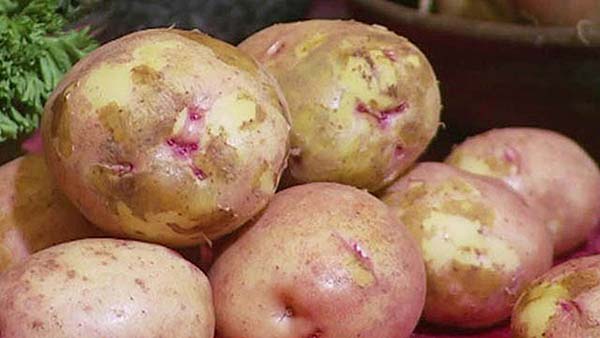
If you dig it too late, then the potato can start to grow, its vegetative processes will resume, that is, sprouts will begin to form, which in turn will begin to take all the nutritious juices from the tuber. This means that in the end it will not be able to be stored for a long time, and in addition, its taste will noticeably deteriorate.
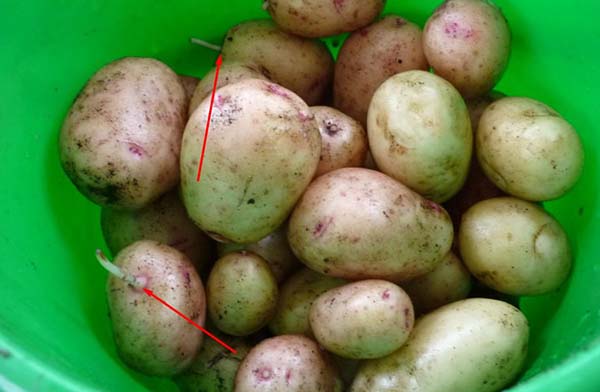
How to determine the optimal time when you can and should dig out potatoes from the garden for storage?
Signs of readiness
The most tested and reliable guideline, which will indicate exactly when it is time to dig out potatoes, isappearance his tops. When she will completely fade and dry, and, therefore, with it, the growth of tubers will stop, you can start harvesting. After the tops have died, you have about 3 weeks to remove the entire crop from the garden.
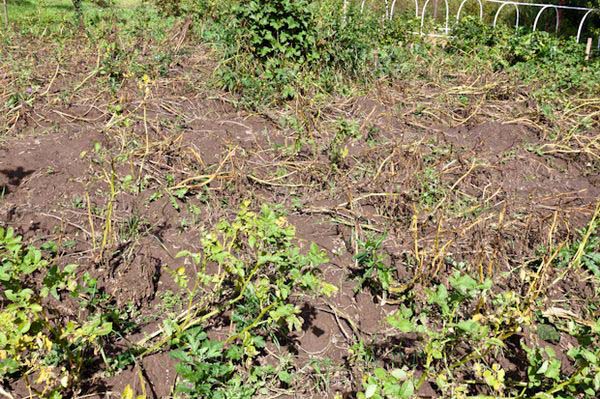
Note! Often, potato tops may not dry out naturally, but because of it lesions by late blight... In this case, it turns black and dies, but the tubers by this time may not ripen.
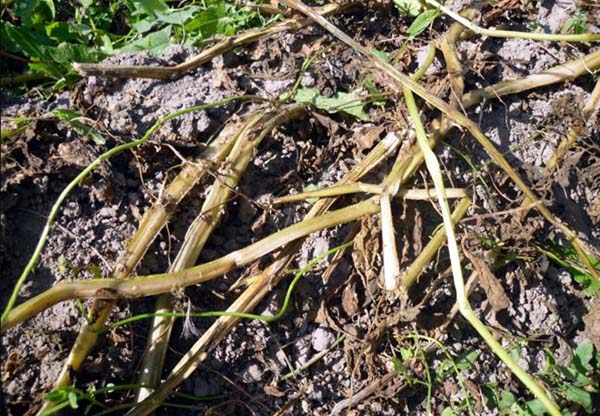
Some summer residents are guided by ripening of seed fruits of potatoeslocated in the tops of the tops, they are sometimes called green potato "tomatoes".
Important! In fact, these are potato seeds that can be harvested, then next season plant, and from the grown small tubers in the future you can grow your own elite potatoes.
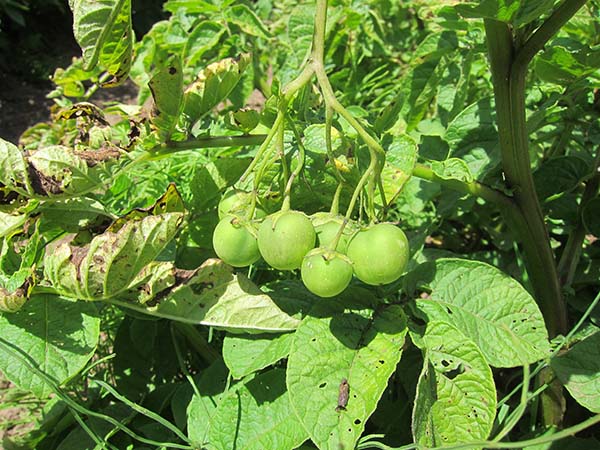
Important! Again, this is by no means a sign of tubers ripening, but from this point on, the tubers can be dug up and eaten. It is too early to lay it for storage, because its outer shell (skin) has not yet been strengthened.
One of the most important factors that you need to be sure to focus on when you plan to dig potatoes is weather forecast:
- if your bushes are really affected by late blight, then in case long rains, the fungus will surely fall into the ground and infect the tubers themselves. And if you lay them in storage, then your harvest may all die. Excessive moisture generally provokes various rot.
- it is imperative to dig up all the potato tubers before the onset of stable autumn frosts.
Advice! You can always dig out one bush to visually assess the readiness of the tubers. The peel should be firm, not flake or peel off when rubbed.
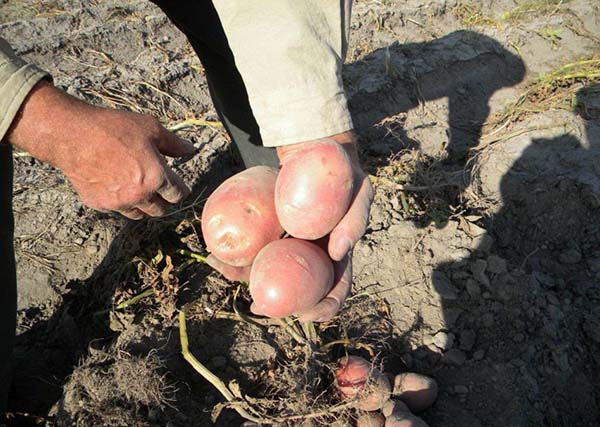
Thus, to accurately determine the maturity of potatoes, you should use all possible signs and methods of checking the degree of readiness for harvesting for storage.
Video: signs of potato harvest readiness for storage
What affects the maturation of potato tubers
Several factors can be identified that affect the timing of the ripening of the crop, namely: the planted variety, soil fertility and the degree of fertilization and dressing, the amount and frequency of irrigation (rain).
Variety
One of the best ways to determine if a potato is ready to dig is by knowing its ripening varietal characteristics.
According to the ripening period, potatoes can be conditionally divided into the following varieties:
- super-early (the crop can be harvested in 35-55 days);
- early (55-75 days);
- medium early (75-90 days);
- mid-season (90-105 days);
- medium late (105-120 days);
- late (120-140 days).
Advice! Naturally, you need to choose exactly the variety that, in terms of ripening time, will have time to fully mature in your climatic zone, that is, before the onset of frost.
Soil fertility and the amount of fertilization
The more fertile your land, the longer your potatoes will ripen. This means that if you also feed the potato plantations, then the harvesting period may be significantly delayed, but the tubers will definitely grow larger. Another thing is, if your land is scarce, you do not fertilize it at all, then the tubers will take all possible nutrition from the soil quickly enough and stop growing.
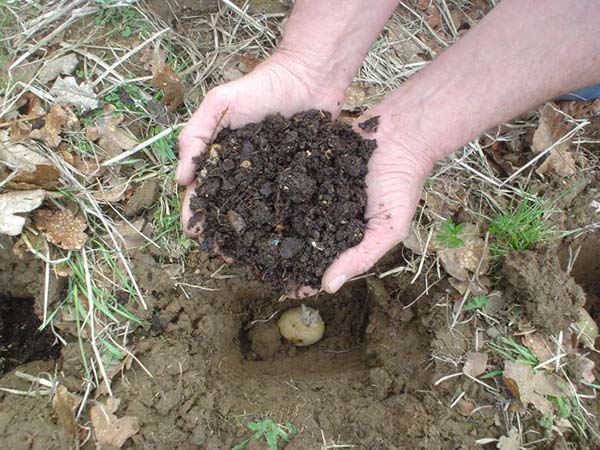
Note! Read about what, when and how to properly feed potatoes during the entire growing season. in this article.
Number and frequency of watering (rains)
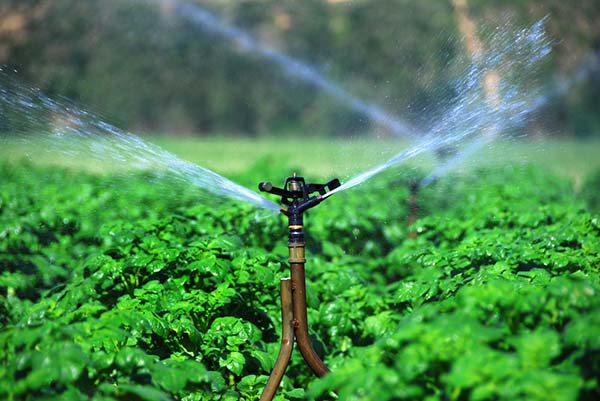
If the summer is very hot, and there is practically no rain, and you forget to water the potato beds or you rarely do it, then he will sing quickly, but you should not wait for a good harvest in this case, since the tubers will grow small.
Cleaning times depending on the region of residence
Naturally, potatoes are harvested in different regions and climatic zones at certain times. After all, it is imperative to take into account the weather conditions, namely, the moment the temperature drops, the beginning of autumn frosts, in order to choose the appropriate (optimal) variety for growing.
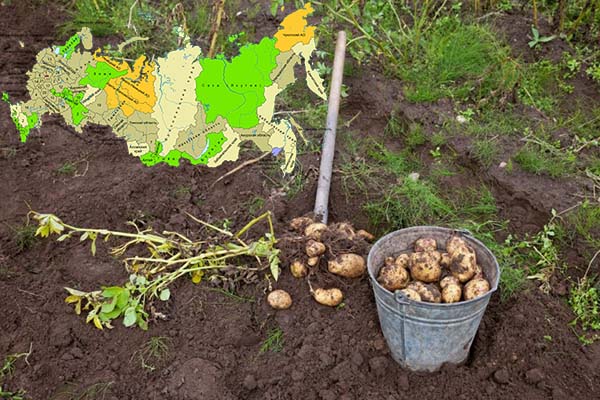
So, in the middle lane (Moscow region) dug up potatoes in the second half of August and usually finish in the second half of September.
In the Urals and Siberia harvesting of potatoes in most cases occurs in August, sometimes dragging on until the first days of September.
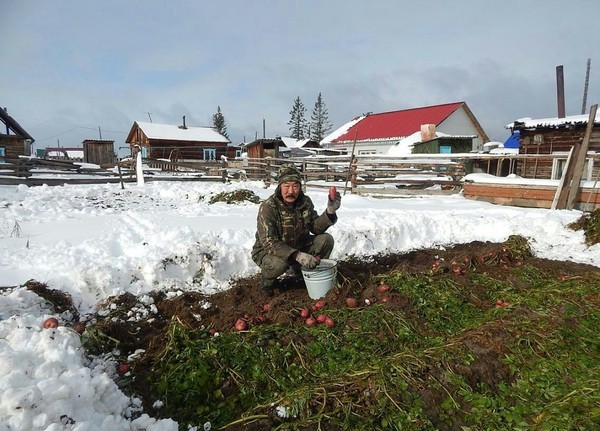
And here in the southern regions (Krasnodar Territory, Kuban, Crimea), on the contrary, it is not so important when the cold snap and frost begins. The thing is that under local conditions, potatoes stop growing due to too high summer temperatures, that is, as a rule, harvesting takes place in the summer - at the end of July-beginning of August.
How to properly dig potatoes from the garden: the necessary tools and other tips
When you decide on the timing of harvesting potatoes from the beds, which means you are completely sure that the tubers are ripe, you will need to choose a suitable day for digging out the crop.
It is optimal to choose a dry and clear day for harvesting potatoes, when it is still warm, that is, the air temperature is about + 10-20 degrees. In such conditions, the harvested crop can be well dried in the sun, besides, the earth quickly flies off and does not stick to the tubers. However, it is not recommended to do this in the morning, when the soil temperature is noticeably higher than the air temperature.
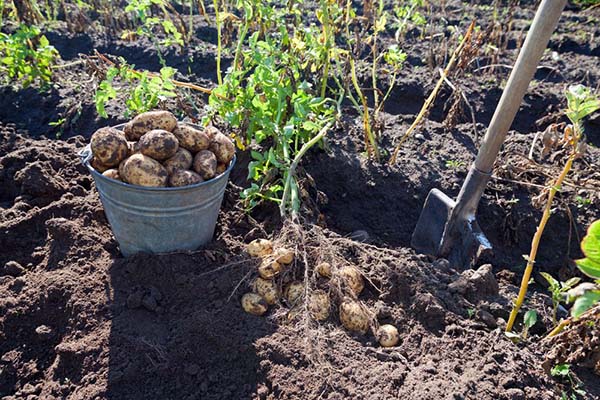
Important! Potatoes should not be dug out while it is raining and the soil is damp and wet. Firstly, it will be quite problematic to dig it up. Secondly, to dry you will have to bring dirty tubers into the room.
How and how to dig potatoes
This issue also often causes a lot of controversy. Many people think that it is better to dig out potatoes with a pitchfork, because in this case the likelihood of damage to the tubers is significantly reduced than using a shovel. On the other hand, if you prick the tuber on a pitchfork, then it will definitely not be stored, but the potatoes cut in half can still lie down. In general, everything depends on you, it is convenient to dig with a shovel - dig, with a pitchfork - that means, with a pitchfork.
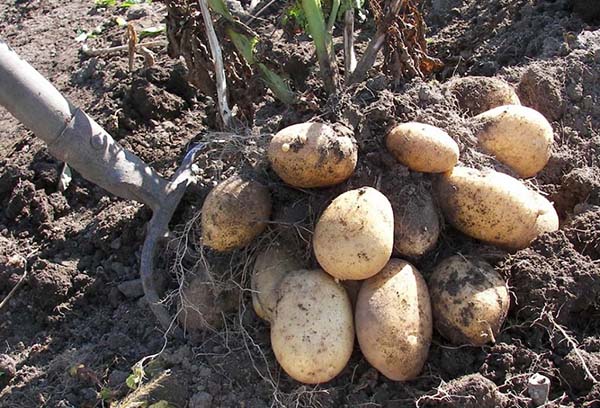
Advice! But still, it is better to send only whole tubers for storage, chopped up and damaged, it is more practical to immediately eat them.
If you have land loosethen it is necessary pull slightly on the potato tops, in order to pull out the bush together with the tubers, and then, with the help of a shovel or pitchfork, find the detached tubers that were “lost” at a depth.
If the soil heavy and densethen do not pull the tops with your hands (just tear it off). Required without fail carefully dig a bush from the side with a more convenient tool, and then pull the tubers to the surface.
Video: how to properly harvest potatoes
By the way! Of course, it is naturally more convenient to harvest an entire potato plantation using a special walk-behind tractor. As well as landing. But this hardly makes sense if you have a summer residence of 6 or even 12 acres.
Video: harvesting potatoes with a walk-behind tractor (potato digger)
Do I need to mow potato tops before harvesting
Advice! The site already has a detailed article that fully discloses the issue of the need and timing of mowing potato tops before digging the crop.
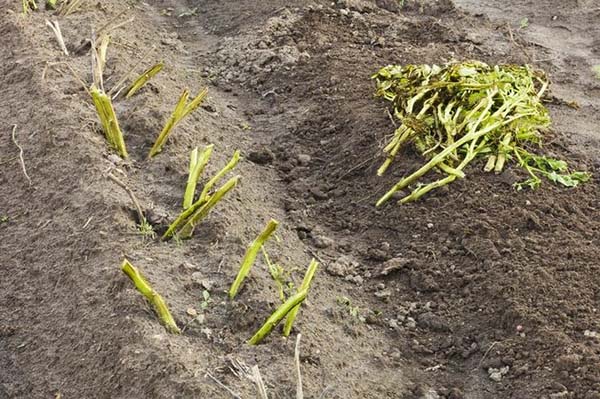
Preparation and storage methods for potatoes for the winter
If the weather is sunny, then leave the tubers on the ground, let them dry out and disinfect under ultraviolet rays... Such processing will help prevent the development of diseases and rot during storage in the future. Thus, after digging, the potatoes can be dried in the sun, but no more than 2 hours, otherwise it will begin to form poisonous substances (solanine), but before he can turn green.
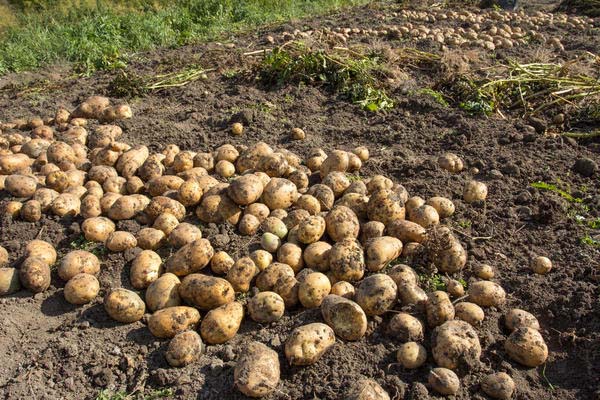
Important! About, how to properly prepare potatoes for storage, where and in what to store them (what are the ways), read in this article.
In order to get an excellent harvest of potatoes in its pure form, the decisive step must be to determine the correct timing and methods for digging from the beds for storage. Skillful preparation and storage of potatoes for the winter are equally important.
Video: when to dig potatoes

